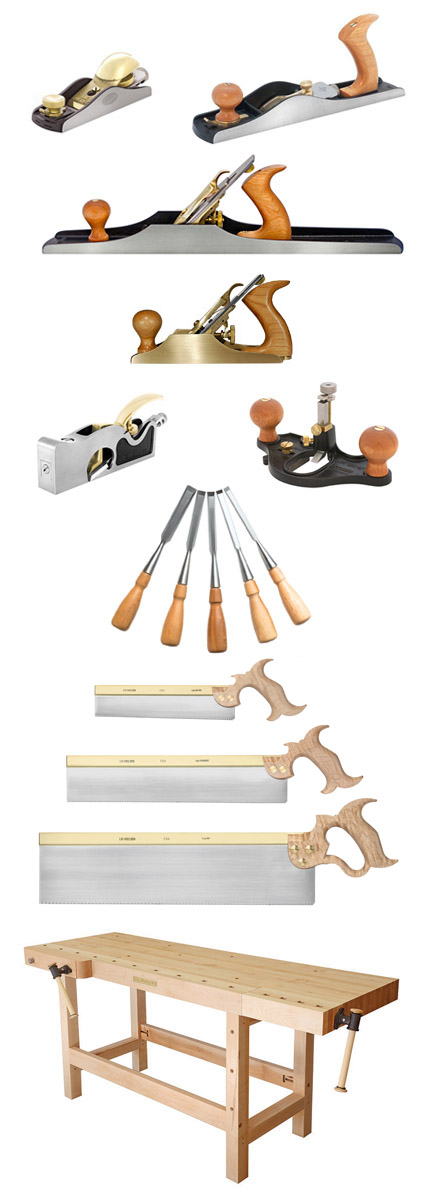The Core Tool Concept can help demystify the world of hand tools for people who are just getting started with hand tool woodworking.
A simple set of core hand tools enables you to efficiently and safely build furniture in a small shop, for a fraction of the cost and space required for power tools to do the same things. Not only is each core tool capable of performing a variety of tasks individually, but they offer virtually limitless possibilities when they work together as a set.
Unless you are already a seasoned hand tool woodworker, the vast array of hand tool choices in today's market may seem overwhelming. Here are some tips for choosing core tools for furniture building.
Everyone needs a Block Plane, and our No. 60½ Adjustable Mouth Block Plane is the most versatile design. If you start with rough wood, the next tool you need is a Jack Plane – our No. 62 Low Angle Jack is our favorite.
Next (or if you start with pre-surfaced wood), comes a flattening tool, which would be a Jointer Plane, usually a No. 7 or 8.
For finishing surfaces you will need a Smoother – a No. 4 or 4½ is a good place to start. Then, consider a shoulder plane for trimming joints – the No. 073 Large Shoulder Plane will handle large and small jobs – and other Joinery Planes, like the Router Planes, depending on your work.
Start with a couple of sizes and go from there. Our chisels only need a light honing to get started.
For joinery, start with a Tapered Dovetail Saw. Next, you will need a Tapered Crosscut Saw – the Carcass Saw -- and later a Tapered Tenon Saw. Especially when sawing, remember: let the tool do the work.
Often overlooked, a good bench is essential for hand tool work. A well designed bench holds your boards so you can easily work the faces, edges and ends of your pieces. Our workbenches and vise hardware are designed to be rugged and effective at holding the work for a variety of operations.

